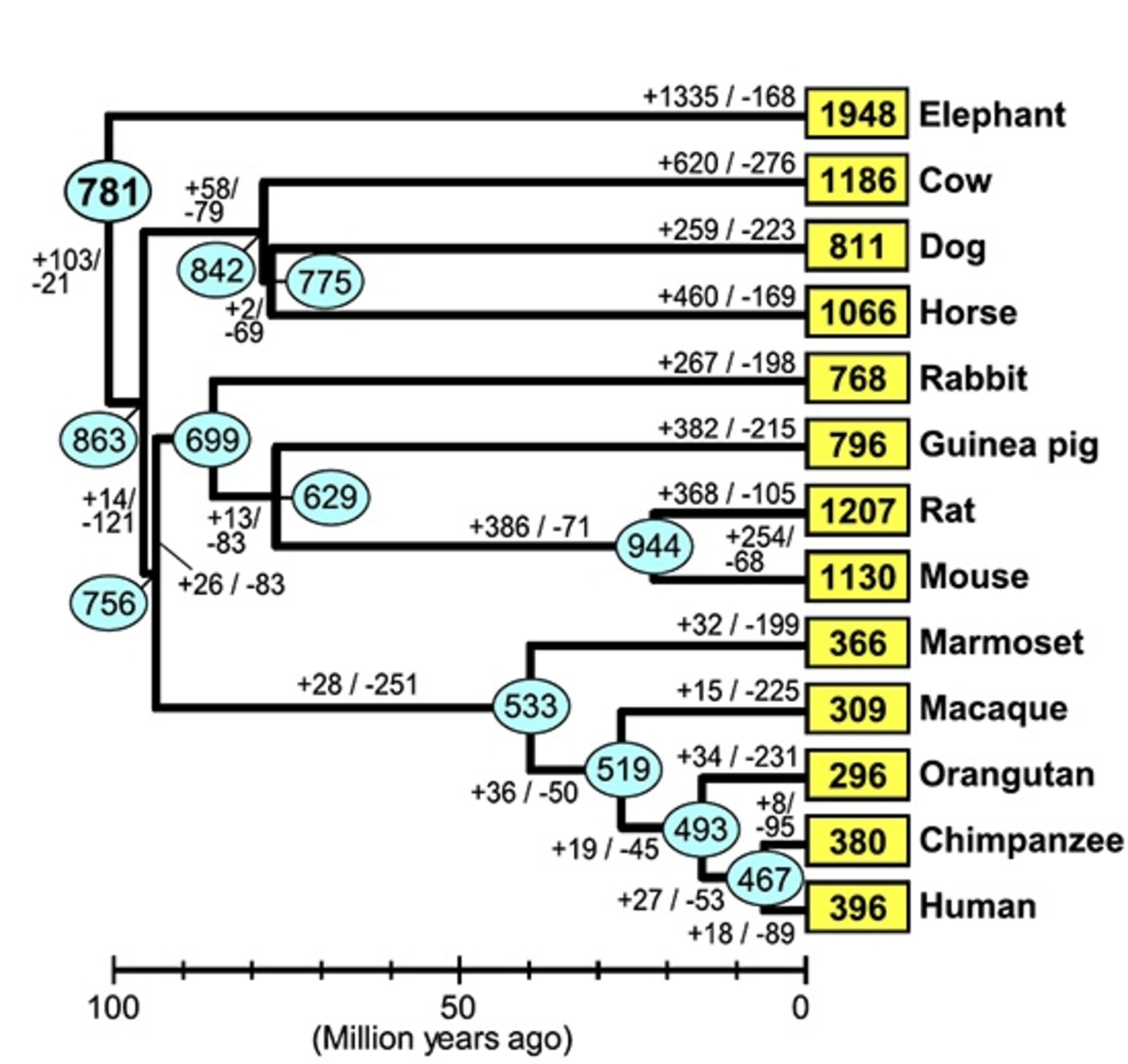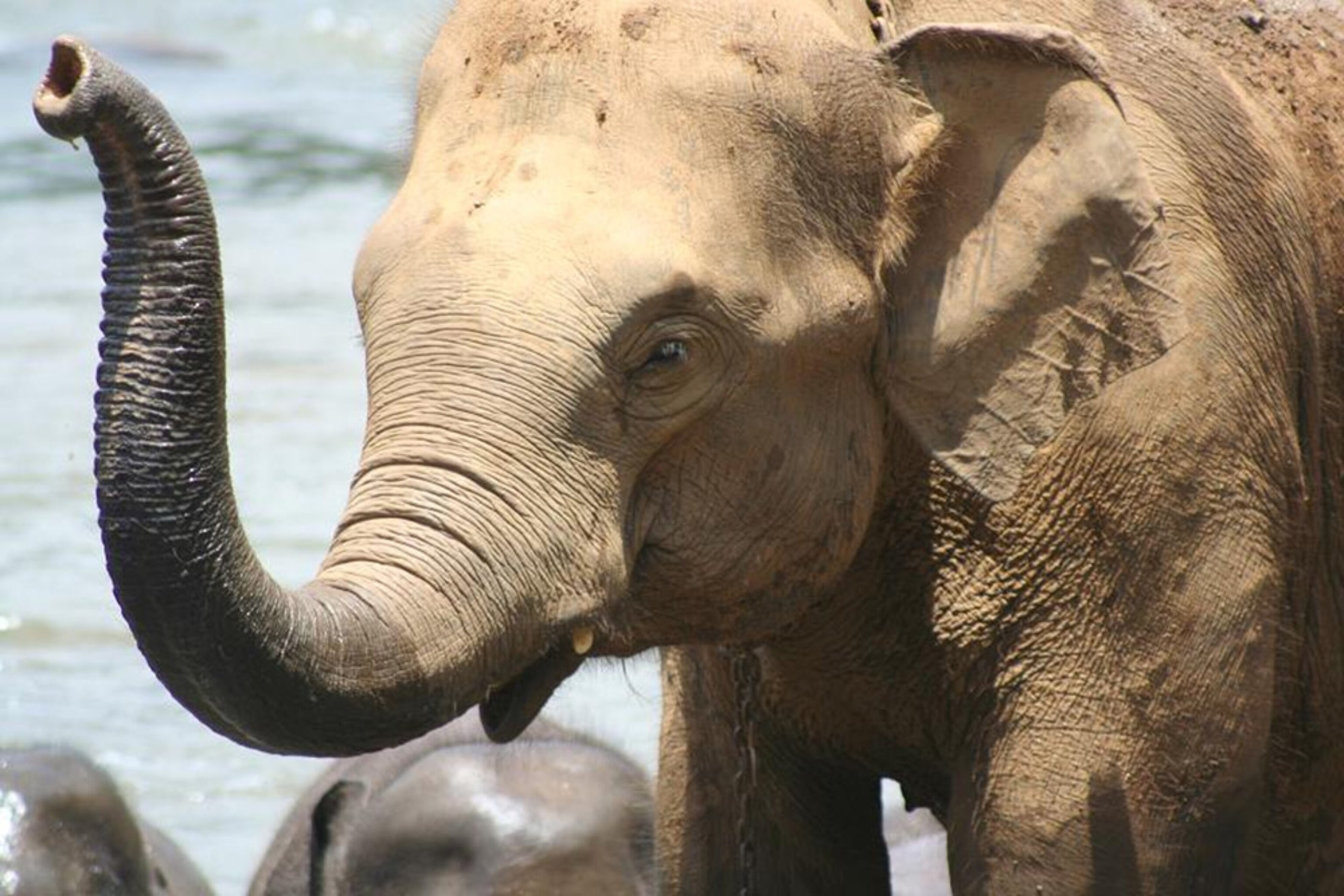Animals have been smelling for hundreds of millions of years, but the evolution of that sense is difficult to trace. You can’t ask an elephant to describe the fragrance of an acacia tree, for example, nor can you ask a lion if it gets the same feeling from a whiff of the same plant.
So scientists have to gather indirect clues to how different species use their noses. One way is to run simple tests on animals, seeing if they show an ability to tell different odors apart. Elephants, for example, can tell the difference between the smells of as many as 30 different members of their extended family.
Another way to track the evolution of smelling is to dissect the molecules that do the smelling in different species. Inside our noses, nerve endings are studded with receptors that can grab different odor molecules. All mammals build variations on the same basic structure, known as an olfactory receptor. But they may have hundreds of different kinds of receptors in their noses, each encoded by a different gene. The structure of each kind of receptor determines the kind of molecules it can grab–and the signal it can send to the brain.
Recently, scientists at the University of Tokyo compared 20,000 olfactory receptor genes from 13 species of mammals. In some cases, such as elephants, they were the first to make such a catalog. In other cases, such as cows and mice, they identified olfactory receptor genes that had gone overlooked till now.
One striking result of the study was that elephants have a lot of different olfactory receptors. They have 1948 receptor genes, the highest ever recorded for a species. Dogs have less than half, with 811. And humans have 396.
Does that mean that elephants have evolved to become five times better at smelling than we are? There’s not a simple relationship between olfactory receptor genes and the sense of smell. And the evolution of smell is a lot more than just a list of numbers.
New olfactory receptors don’t just come out of the blue. They emerge from a special kind of mutation. Sometimes when cells are duplicating their genes, they accidentally make an extra copy of a stretch of DNA. Where there was once a single olfactory receptor gene, there are now two identical copies. Mutations can then alter the sequence of one of the genes, and thus change the structure of the receptor.
But mutations can also rob mammals of olfactory receptors. They can disable a gene, so that neurons can’t use it to make the corresponding receptor. In some cases, they accidentally delete the gene altogether.
What’s most interesting about the new study from Tokyo is that the scientists were able to reconstruct 100 million years of smell evolution in a single tree. They could recognize related versions of the same gene in different species, and use that information to trace when new genes arose and when they disappeared.
Here’s the tree, and I’ll explain it below.

The common ancestor of all these species lived about 100 million years ago. Based on their shared genes, the scientists determined that that ancestral mammal had 781 genes–almost twice as many as we have today, and less than half of what elephants have.
The blue circles show how many genes the common ancestors of today’s mammals had at each node in the tree. The numbers along each of the branches show how many new genes were gained, and how many were lost.
The lineage that led to elephants certainly gained a lot of new genes–1335 all told. But so did a lot of other lineages. If you trace the tree from the base to rats, you’ll find that they gained 884 new genes. But they also lost a lot of genes along the way, too, so that now they have only 1207 genes.
But elephants lost genes, too–168 all told. Even if elephants do have an amazing sense of smell (something we just don’t know), that wasn’t simply the result of adding new genes. Some genes may have been useless to them–ones that remain useful in other species. But we don’t know why they lost the genes they did.
There are other weird features of this tree. As you move down the tree from the common ancestor to rats, for example, you can see that their ancestors had a net gain of genes for their first 10 million years or so, followed by at least 20 million years of losses, followed in turn by a major gain of genes. No one can say why they had these ups and downs.
Our own evolutionary story has mysteries of its own. There’s no question that we humans are pathetic in the olfactory receptor gene department. Many scientists have speculated that our primate ancestors shifted to relying more on vision for finding food and attracting mates. With a gain of vision came a loss of smell, the argument goes. But we can’t go too far in dismissing smell from our evolution. After all, as my fellow Phenom Ed Yong wrote this spring, we can still smell trillions of different smells. For some reason, other apes and monkeys have ended up with fewer olfactory receptor genes than we still have. It’s especially intriguing to consider all the genes we gained even as our collection of receptors shrank. We have 18 kinds of olfactory receptors that are found in no other mammals, not even chimpanzees, our closest living relatives. What on Earth do we use them for?
This tree represents everything we know about the evolution of these genes in mammals. But there are some 5000 other species of mammals on Earth, and adding their branches would reveal a lot more. As you can see in this figure, elephants are only distantly related to rodents, primates and the other species that have been studied so far. As a result, they sit on a long lonely branch in this tree. In reality, elephants have plenty of living relatives, such as manatees and hyraxes. It would be interesting to see if their huge set of genes grew gradually, or exploded after they gained their trunks.
Meanwhile, our own stubby branch raises questions of its own. Did Neanderthals have the identical set of olfactory receptor genes as we do? How would a rose smell to a Neanderthal, I wonder?

